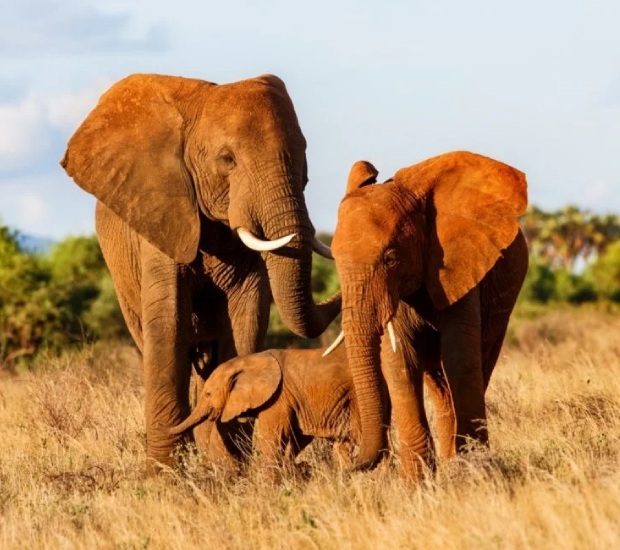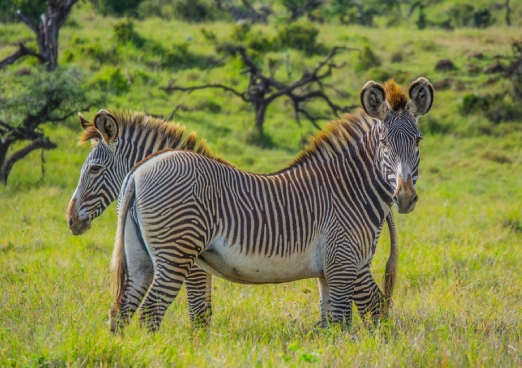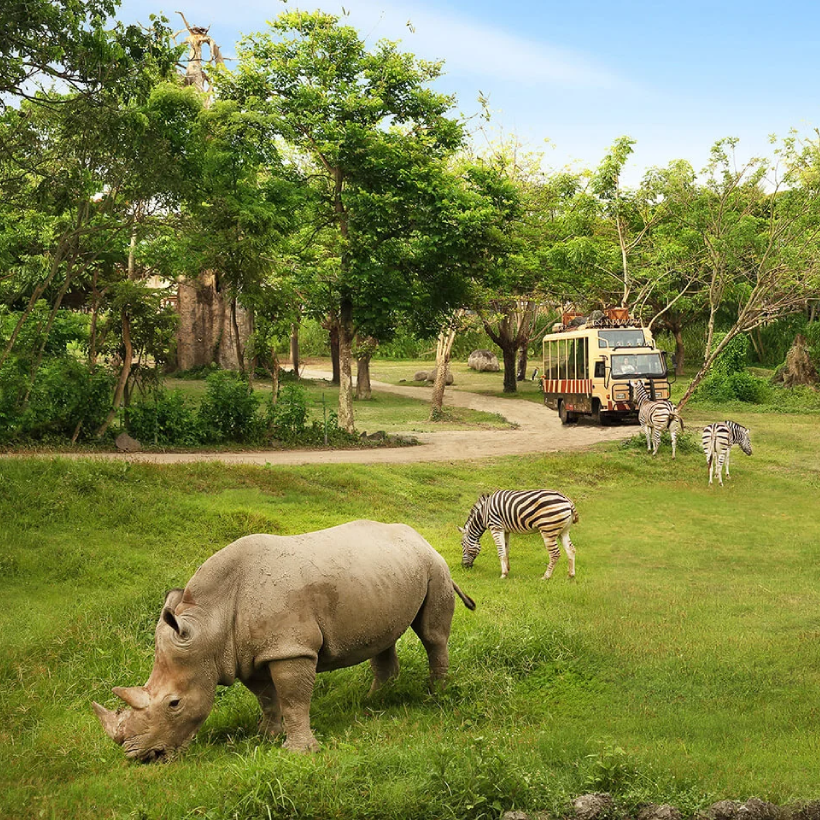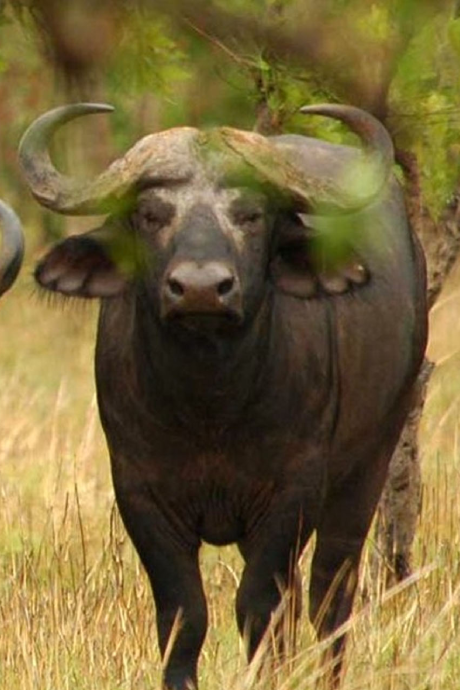
Covers 870 square kilometres of wild terrain with rivers, woodlands, and rugged, untouched beauty.

Lies near Bisanadi Reserve and Kora National Park in Kenya’s remote northeast region.

Home to diverse wildlife, river systems, and iconic landscapes ideal for authentic safari experiences.

Famous for the Born Free story of Elsa the lioness and Joy Adamson’s legacy.

The wilderness, history, and protection all come together uniquely in Meru National Park. One of the most interesting things about it is the 44 km² rhino refuge, which is home to over 60 black and white rhinos and a few young calves. This sanctuary is very important to Kenya's attempts to protect rhinos. People also know the park from the famous Born Free story because it was where Elsa the tiger lived and where George Adamson's first camp was. There is a lot of wildlife on Meru because it has 13 rivers and streams running through a dry landscape of baobab trees and doum palms. Its beautiful hills, quiet trails, and lodges that aren't overcrowded make it perfect for families and travellers who want a real, peaceful safari experience.



The best time to visit Meru National Park is from June to October, when wildlife gathers and grass is low, making sightings easier and clearer.
Get a free, no-obligation quote tailored to your needs by answering a few quick questions.
Meru National Park is open year-round, but the best time to see wildlife is during the dry season, which runs from June to October. It doesn’t rain much, the grass stays short, and animals gather near water, which makes them easier to see. People can enjoy the park's vast nature in peace during these months, when the days are sunny and the skies are clear.
The high season spans December to March and July to October. The park is not too crowded at this time, but this is when safaris are more likely to go as planned. When it's dry, roads are easy to get to, but dust can sometimes make it hard to see.
From November to May, when it rains, the land turns into a beautiful, green paradise. It's a great time to watch birds and take pictures because flowers grow, migratory birds arrive, and many animals give birth. However, animals tend to move around, thick grass makes it hard to see, and some roads become tricky to use, especially after heavy rain in April and November.
If you're on a tight budget, the low season is from April to June. Rates may be lower, but bad weather may make some activities less possible.
Getting to Meru National Park is simple. To get there by road, you'll need to go through Nanyuki or Embu and cover about 350 km in 6 to 7 hours. Alternatively, regular flights from Nairobi's Wilson Airport to local airstrips like Kinna or Elsa's Kopje are faster, especially when the roads aren't working as well because of the rain.
Explore Meru’s wild side on a thrilling game drive. Spot elephants, lions, rhinos, giraffes, and even cheetahs across open plains and riverbanks. Watch hippos and crocodiles lounging near the Tana River, with scenic views of Mount Kenya in the background. It’s a classic safari adventure with dramatic landscapes and rich wildlife.
Meru is a paradise for bird lovers, home to over 400 species. Walk through woodlands, swamps, and riverine forests where vibrant birds nest and call. Look out for Somali ostrich, martial eagle, palm weavers, and the elegant African finfoot. Every birdwatching walk here feels like a peaceful, colourful discovery.
Step into the traditions of the Tharaka people living near the park. Visit their villages, enjoy local dances, and hear stories passed through generations. A cultural visit adds meaning to your safari and shows you how people and nature live side by side in this remarkable region of Kenya.
Spend a relaxing afternoon by Meru’s peaceful rivers, fishing under the shade of palm trees. Try your luck catching catfish, tilapia, or barbel, with snacks and a good book in hand. It’s a quiet, scenic way to enjoy nature and unwind in the wild.
Visit Adamson Falls and the resting place of Elsa the Lioness, star of Born Free. This historic walk takes you through rugged, wild terrain once roamed by George and Joy Adamson. It’s a touching reminder of Meru’s conservation legacy and a highlight for fans of wildlife history.
Walk into a stronghold of rhino conservation. Meru’s 44km² rhino sanctuary is home to over 80 black and white rhinos. Learn about their habits, challenges, and the efforts to protect them. It's a rare chance to see these endangered giants and be part of their story.
Meru National Park is home to the Big Five. You can see elephants, lions, leopards, and cheetahs all the time. Both black and white rhinos live in their 85 km² rhino reserve. Hippos and Nile crocodiles do very well in the area around the Tana and Rojewero Rivers.






Meru National Park has many places to stay, from simple camps to luxury lodges like Elsa’s Kopje. You can sleep inside the park or in nearby Meru town. Options include guesthouses, safari camps, and hotels that fit different budgets and give you easy access to the park.
Experience a Tailor Made Tour with Jemu Expeditions—crafted to match your travel style. Enjoy personalized safari itineraries, exclusive wildlife experiences, and authentic cultural encounters across East Africa’s iconic landscapes.

View our popular Kenya safari itinerary and experience the best of African wildlife. Explore iconic destinations like Masai Mara, Amboseli, Samburu, and Ol Pejeta. Enjoy Big Five game drives, scenic landscapes, cultural encounters, and unforgettable safari moments in Kenya.
Experience the best of Kenya’s diverse wildlife and landscapes on this unforgettable safari.
Maasai Mara National Reserve is located in the South Western Circuit along the border of Tanzania
The 7 days safari will include visiting the famous and unique reserve in the Northern Circuit
For millions of years rhinos have thrived carrying their pre-historic and charismatic attributes
Patrizia G
Megan W
Melia B